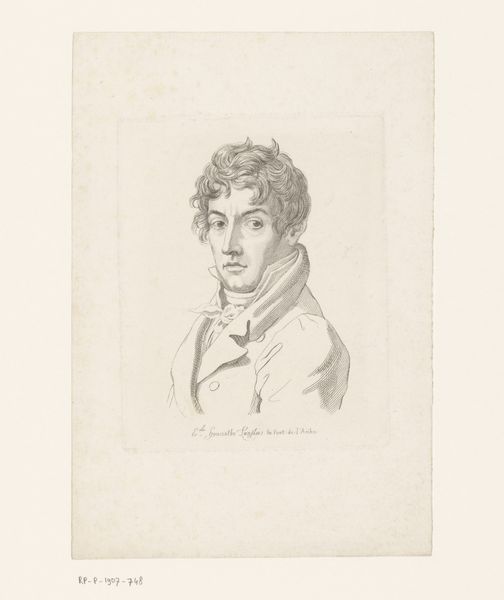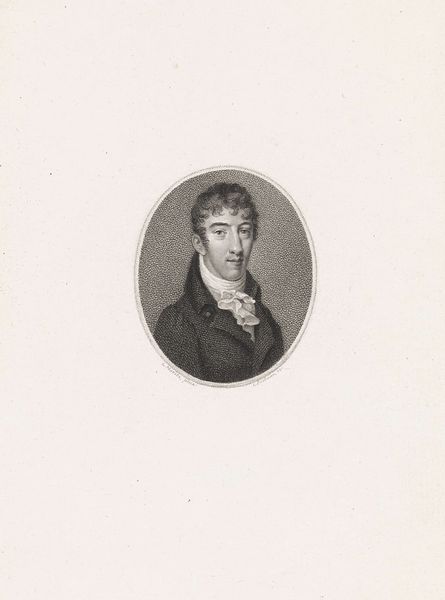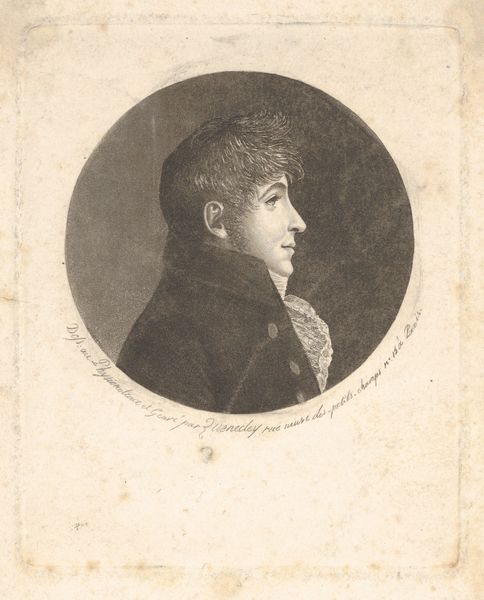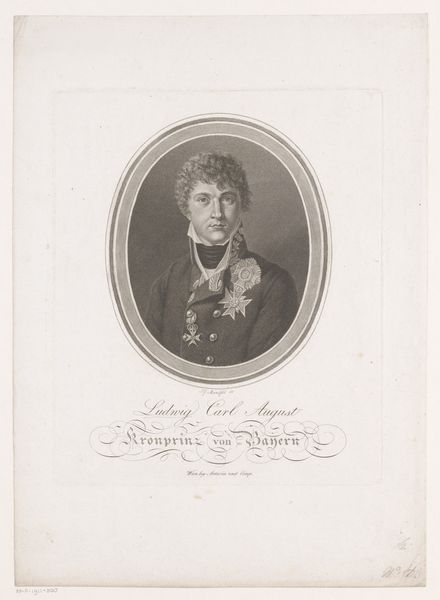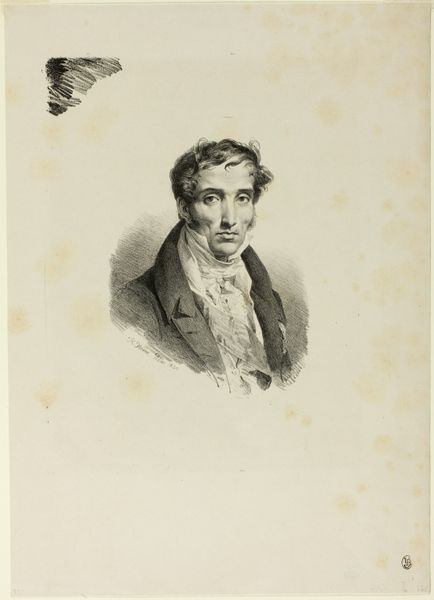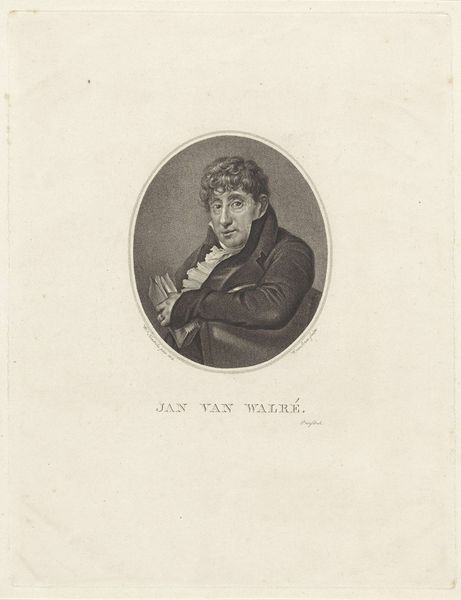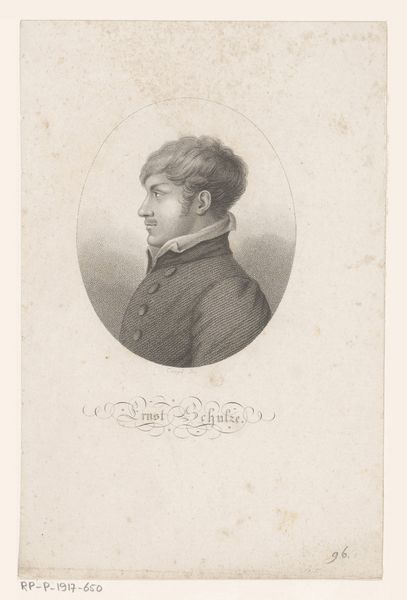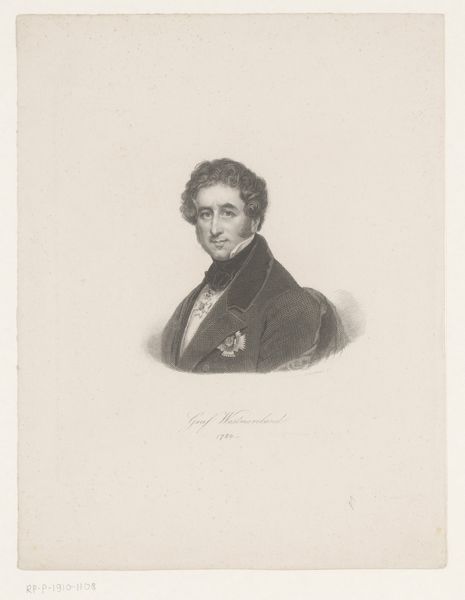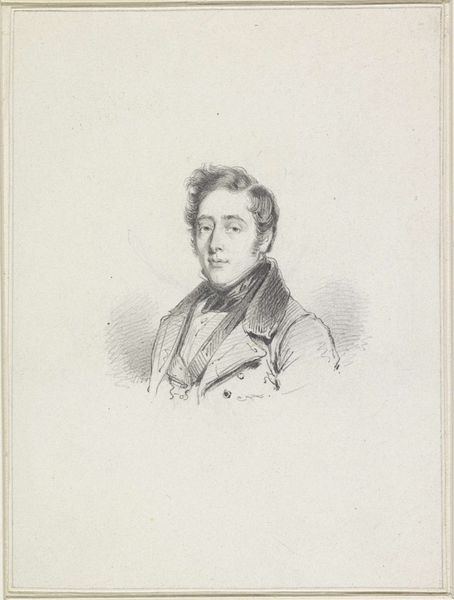
painting, watercolor
#
portrait
#
painting
#
charcoal drawing
#
watercolor
#
romanticism
#
19th century
#
watercolor
Dimensions: height 279 mm, width 213 mm
Copyright: Rijks Museum: Open Domain
Editor: This is "Portret van Jan van Walré" by Willem van Senus, made sometime between 1815 and 1851. It's a watercolor and charcoal portrait. There's something about his eyes, they're really intense! How do you interpret this portrait? Curator: The eyes definitely hold a lot. Consider the Romantic era in which it was created. It emphasized emotion, subjectivity, and individualism. What cultural echoes do you detect in Jan van Walré’s gaze? Editor: I guess he looks a bit melancholic? It's not like the flamboyant portraits you'd see of royalty or powerful figures. There's a certain vulnerability there, maybe. Curator: Precisely. Think about what symbols were frequently connected to melancholy during this period. Do the papers he's holding provide a clue? Are they unfinished, perhaps signifying incomplete potential? Editor: Possibly! I hadn’t thought about the papers that way. It’s interesting to think of it representing unfulfilled dreams. Curator: And note the artist’s choice of watercolor and charcoal. It evokes a certain intimacy, doesn't it? Different from a grand oil painting. What do you think this medium brings to the depiction? Editor: It makes it feel more personal, like we're seeing him in a more unguarded moment. Sort of stripped down. Curator: In his posture, expression, and material, Senus reveals Jan van Walré not as a figure of grand historical narrative, but as an introspective individual facing the emotional complexities of life. Editor: I like how the Romantic era focused on individual emotions rather than just outward success. The intensity of feeling portrayed really resonated. Curator: Absolutely. It reveals how art acts as a cultural mirror, echoing psychological states through visual symbols and artistic techniques.
Comments
No comments
Be the first to comment and join the conversation on the ultimate creative platform.
